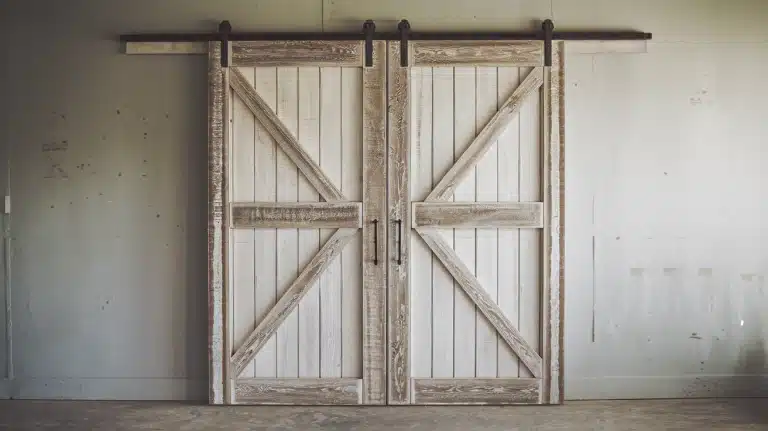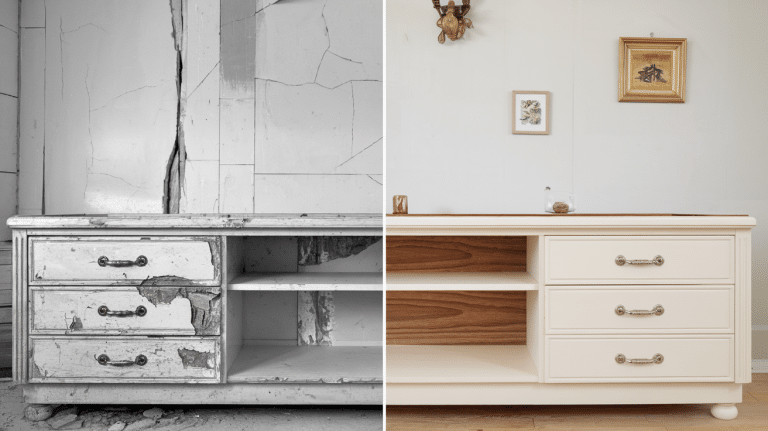How to Sand Wood: A Beginner’s Step-by-Step Guide
Your beautiful woodworking project is nearly finished, but one look under the light reveals scratches, swirl marks, and uneven surfaces that scream amateur work.
You’re not alone. Most beginners think sanding is just rubbing sandpaper on wood until it feels smooth. But how to sand wood properly involves choosing the right grits, using correct techniques, and following a proven sequence that professionals use.
Poor sanding ruins even the best projects. Your stain goes on blotchy, paint peels after months, and those tiny scratches show through every finish. The frustration of redoing work costs time and money.
This step-by-step sanding guide reveals the exact process professionals use. You’ll learn which grits to start with, how to progress through stages, and the techniques that create glass-smooth surfaces ready for any finish.
Ready to convert your woodworking results? Let’s find out how to sand wood like a pro.
Why Should You Sand Wood?
Sanding creates the foundation for any successful wood finishing project. Skip this step, and your paint or stain will reveal every flaw.
Before you even think about paint or stain, you need a clean, smooth surface. Sanding removes old finishes, scratches, or dings that would otherwise show through your new coat.
It smooths rough or uneven grain that can make the stain look blotchy and uneven. The process also opens up wood pores, allowing stain or paint to adhere better instead of sitting on top, like water on glass.
Sanding delivers these key benefits:
- Removes old finishes, scratches, or dings: Clear away surface damage before applying new coats
- Smooths rough or uneven grain: Level out texture variations for consistent stain coverage
- Opens wood pores so stain or paint adheres better: Create proper surface texture for strong bonding
Most importantly, proper sanding helps you get a long-lasting, polished result that won’t chip or peel after a few months. Think of it as giving your wood a clean slate; it’s the difference between amateur and professional-looking work.
Choosing the Right Sandpaper Grit
Understanding grit numbers is the key to efficient sanding; use the wrong grit and you’ll either work twice as hard or damage your wood.
Sandpaper grit numbers indicate the coarseness or fineness of the abrasive particles.
- Coarse grits (40-60): They handle heavy removal tasks, such as stripping paint or smoothing rough lumber.
- Medium grits (80-120: They work best for general smoothing and removing scratches left by coarse paper.
- Fine grits (150-220+): They provide the smooth finish required before applying stain or paint.
The key is working your way up in stages, jumping from 60 grit straight to 220 grit leaves deep scratches that fine paper can’t remove. Start coarse and gradually move to finer grits for the best results.
Complete Step-by-Step on How to Sand Wood
Follow this proven method to achieve professional results every time. Skipping steps will cost you more time and money in the long run.
Tools Required
| Hand Tools | Power Tools | Safety Equipment |
|---|---|---|
| Sanding blocks | Random orbit sander | Dust mask |
| Pencil | Shop vacuum/dust extractor | Safety glasses |
| Brush/cloth | Variable speed settings | Hearing protection |
Materials Required
| Sandpaper Types | Grit Progression | Additional Supplies |
|---|---|---|
| Aluminum oxide (recommended) | 80 grit (starting) | Tack cloth |
| Open coat for wood | 120 grit (medium) | Clean water (for grain raising) |
| Carbide discs (optional) | 150-240 grit (finishing) | Replacement sanding pads |
With the right technique and patience, sanding alters rough lumber into smooth, professional-quality surfaces ready for finishing. Remember to work progressively through grits, keep your sander moving, and always sand with the grain for the best results.
Step 1: Start with 80 Grit for Initial Flattening

Begin your sanding process with 80 grit sandpaper to remove mill marks and level uneven surfaces. This grit is coarse enough to handle imperfections but won’t create scratches too deep to remove later. Cover the entire wood surface with light pencil marks to track your progress.
- Use even, overlapping strokes across the entire surface
- Don’t push down hard – let the sander do the work
- Sand until all pencil marks disappear with consistent passes
Note: Never skip grit levels – jumping from 80 to 220 will leave deep scratches that fine paper can’t remove.
Step 2: Progress to 120 Grit for General Smoothing

Progress to 120 grit once all 80 grit scratches are removed. Apply fresh pencil marks across the surface to monitor your progress. This stage removes the scratches left by 80 grit while preparing the surface for finer grits.
- Follow the 50% rule – never jump more than 50% in grit numbers
- Clean the surface thoroughly before changing grits
- Sand until all previous grit scratches disappear
Note: Cross-contamination from coarse grit particles can ruin your fine sanding work – always clean between grits.
Step 3: Move to 150-180 Grit Based on Your Finish

Choose your next grit based on your planned finish. Use 150 grit if you want deeper stain penetration, or 180 grit for lighter color and film finishes like polyurethane. Continue using pencil marks to ensure complete coverage.
- 150 grit allows more stain absorption for darker colors
- 180 grit works well for most film finishes and lighter stains
- Maintain consistent pressure and overlapping passes
Note: End grain absorbs more finish – consider sanding it one grit finer than face grain for even color.
Step 4: Finish with 220-240 Grit for Final Prep

Complete your sanding with 220-240 grit, depending on your finish type. Oil finishes need finer sanding (220-240) while thick film finishes can stop at 180. Consider raising the grain with water before this final step for ultra-smooth results.
- Use a sanding block for hand sanding on this final grit
- Sand with the grain direction to remove any swirl marks
- Apply a light water coat and let dry, then sand lightly if desired
Note: Hand sanding the final grit eliminates power tool swirl marks that show under finish.
Step 5: Clean and Prepare for Finishing

Remove all sanding dust using a tack cloth or vacuum before applying any finish. Check your work under good lighting to spot any missed areas or scratches. The surface should feel consistently smooth with no visible scratch patterns.
- Vacuum all dust from the surface and the surrounding area
- Wipe with a tack cloth following the wood grain direction
- Inspect under bright light for missed spots or defects
Note: Any dust or debris left on the surface will show through your finish – thorough cleaning is critical for professional results.
Video Tutorial
I’d like to give credit to Stumpy Nubs (James Hamilton) for their informative video, which served as a reference for this guide.
Common Wood Sanding Mistakes to Avoid
Avoid these critical errors that can ruin your finish and waste hours of work; each mistake has a simple fix that saves time and materials.
1. Starting with Wrong Grit
- Mistake: Using too fine or too coarse grit for initial sanding
- Solution: Start with 80 grit for rough surfaces, 120 grit for smooth lumber
2. Skipping Grit Levels
- Mistake: Jumping from 80 grit directly to 220 grit
- Solution: Follow the 50% rule – never skip more than 50% in grit numbers
3. Sanding Against the Grain
- Mistake: Moving sandpaper perpendicular to the wood grain direction
- Solution: Always sand with the grain to prevent visible scratch marks
4. Not Cleaning Between Grits
- Mistake: Leaving dust particles when changing to a finer grit
- Solution: Vacuum and wipe with a tack cloth before switching grits
These mistakes can ruin your finish quality and waste time. Follow proper technique for professional results every time.
Conclusion
Avoiding these wood sanding mistakes saves time, money, and frustration on every project. The key is understanding that good sanding requires patience and proper technique, not shortcuts.
Start with the correct grit for your wood’s condition. Follow the proper sequence without skipping steps. Always sand with the grain direction using light, consistent pressure. Clean thoroughly between each grit change to prevent contamination.
Remember that edges and corners need special attention to maintain crisp lines. Set up proper dust collection for safety and better results. Take time to plan your approach before starting any sanding work.
These simple steps prevent the most common problems that ruin otherwise good projects. Master these basics, and your wood sanding will improve dramatically. The extra care you take during sanding shows in the final finish quality.







